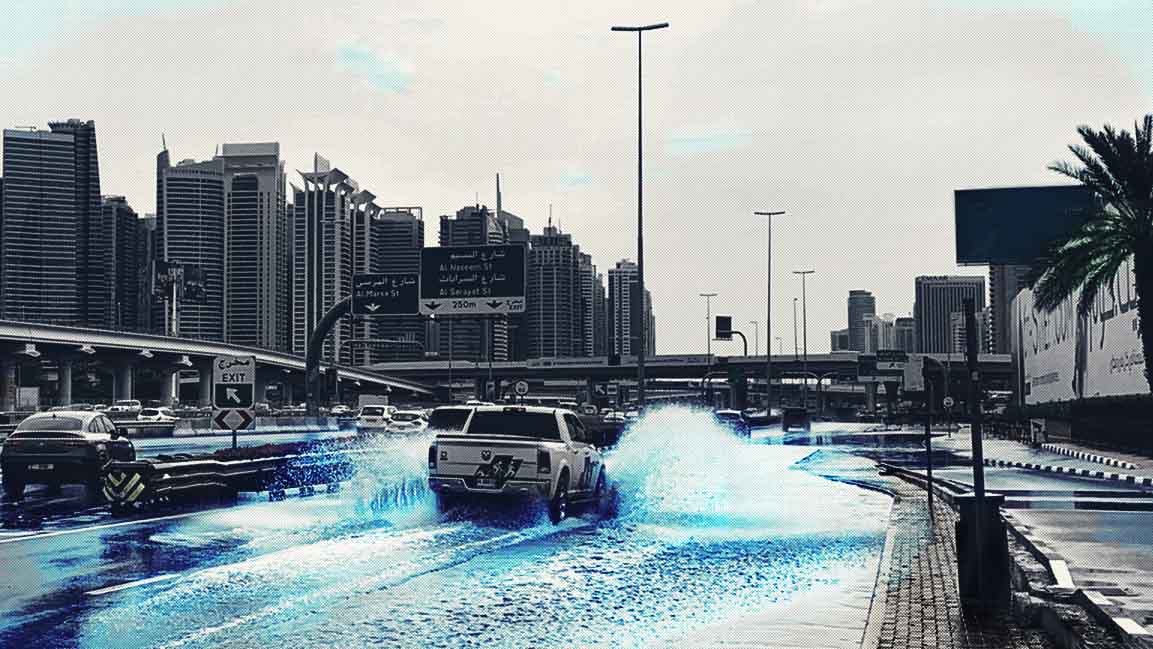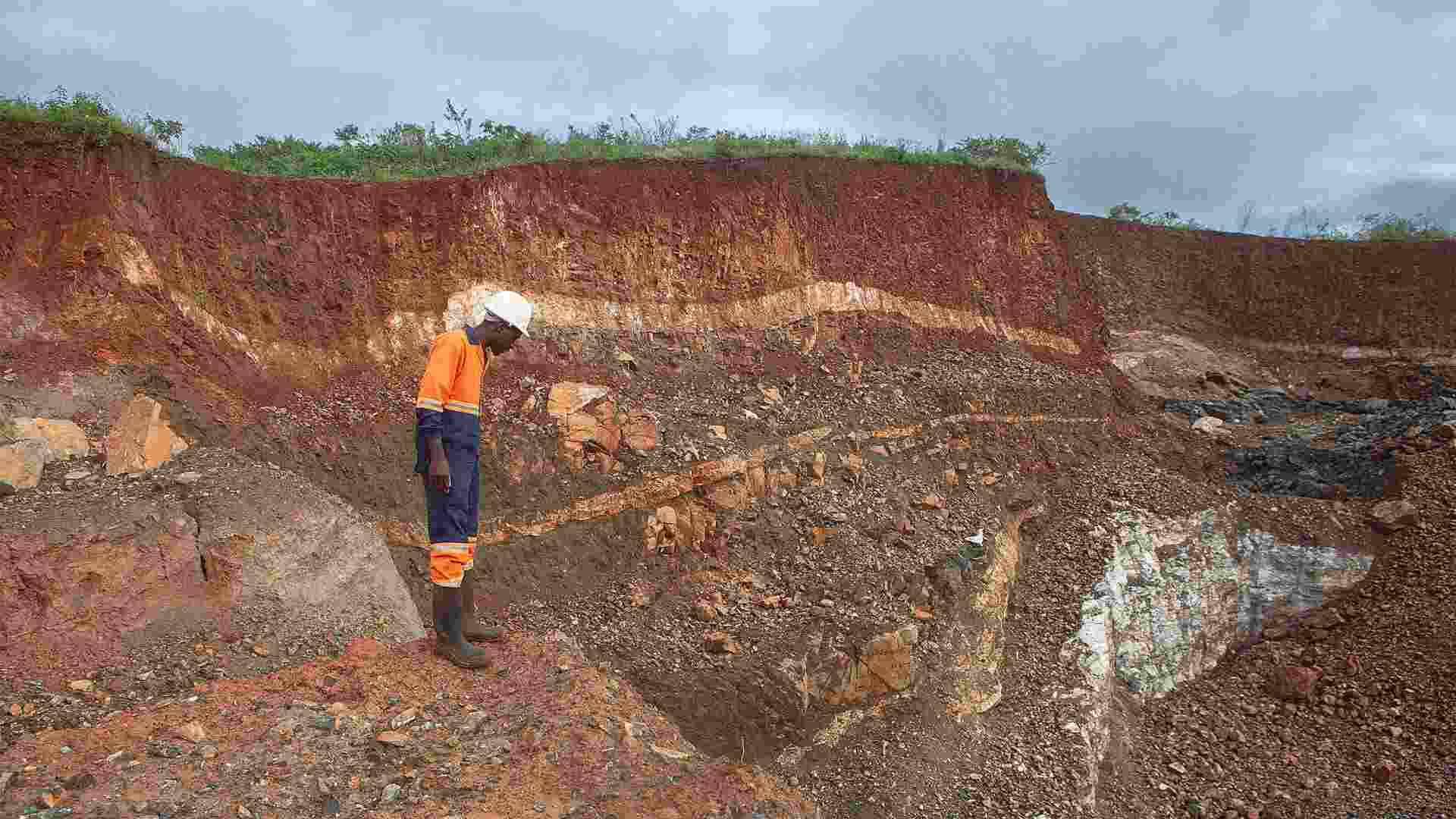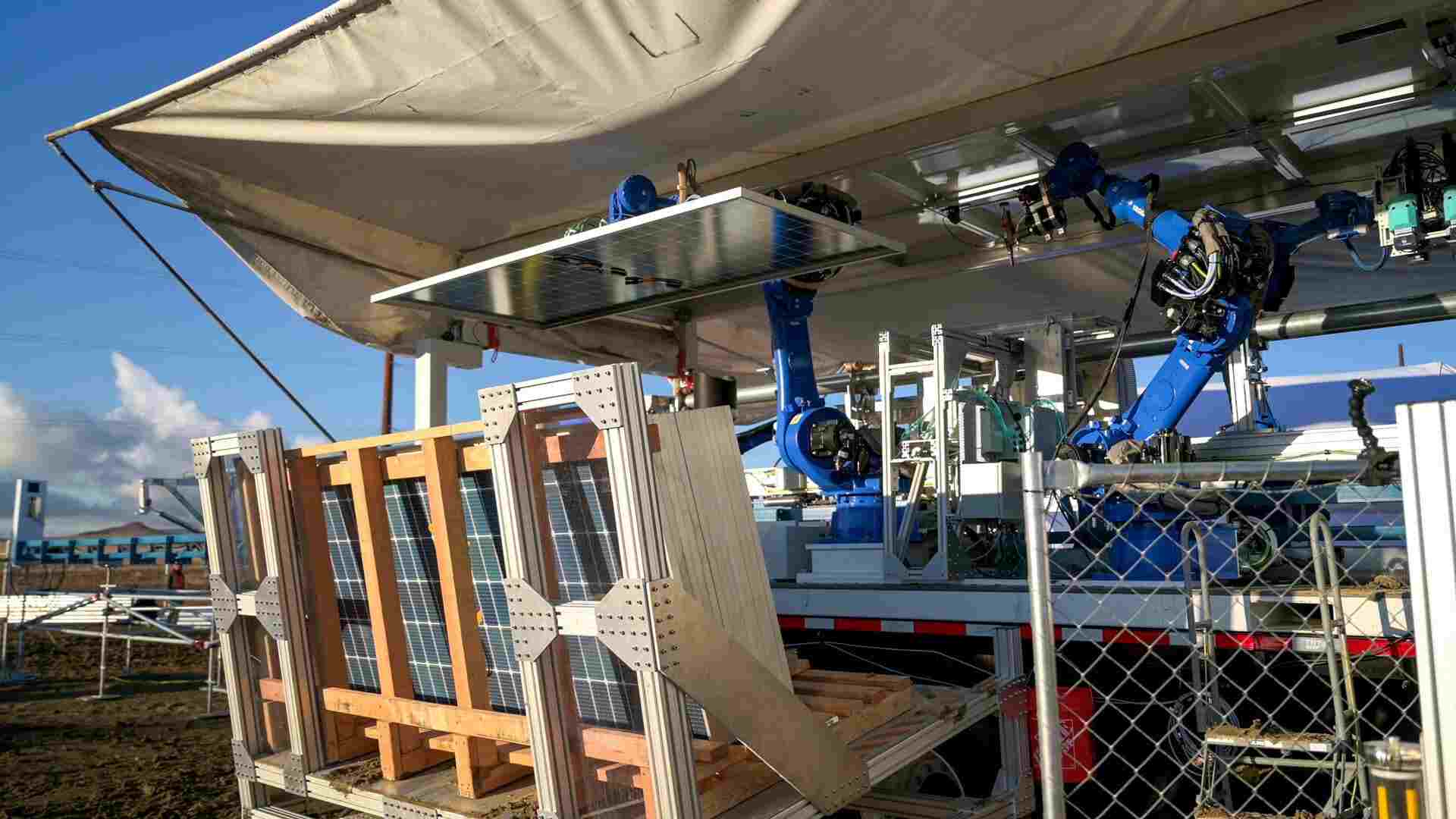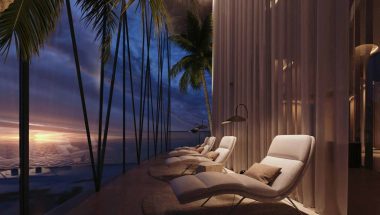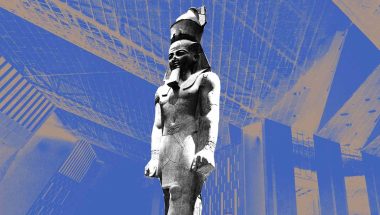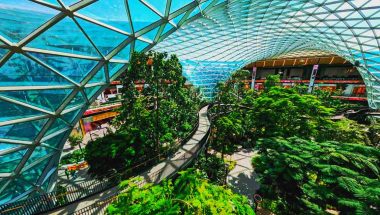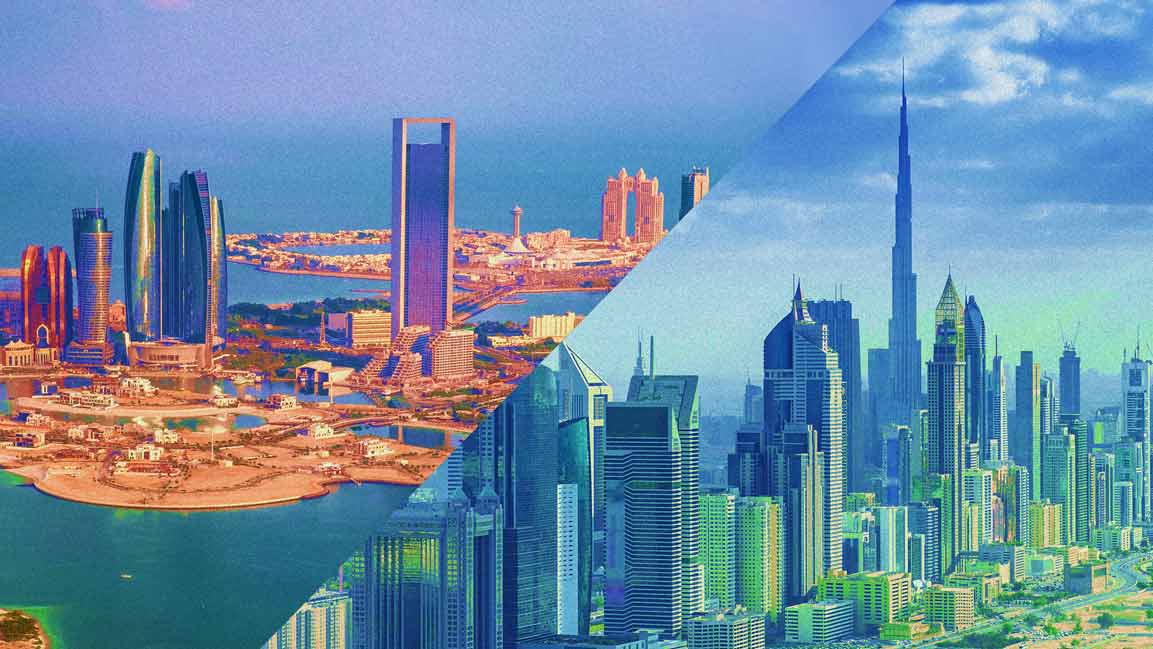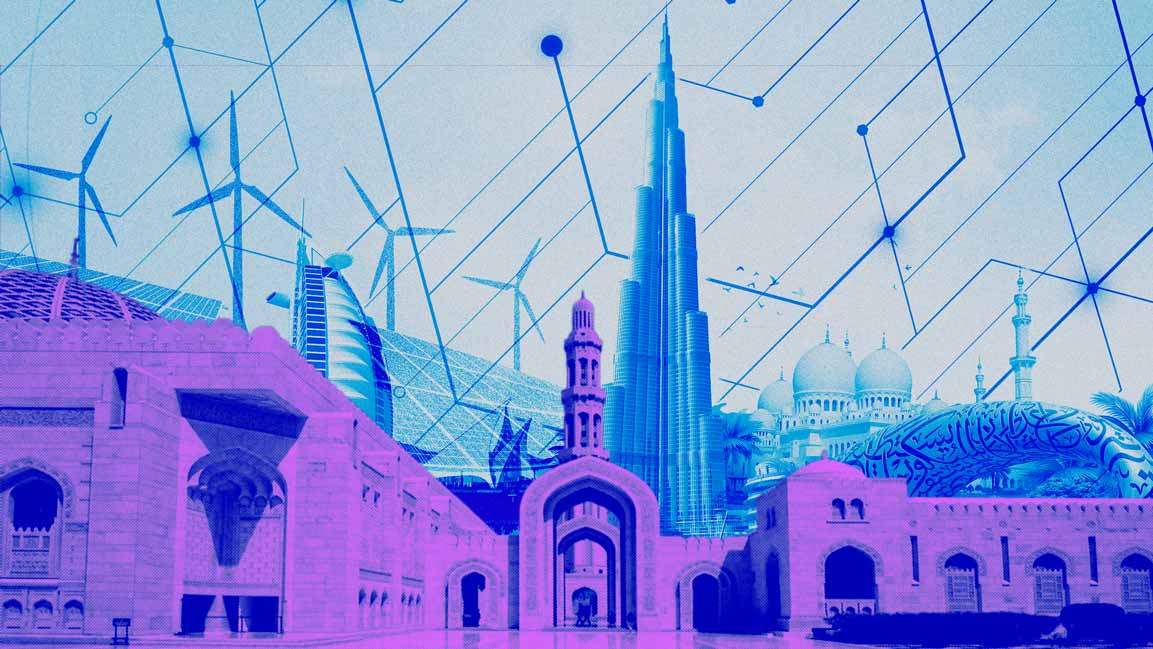- | 9:00 am
Here’s how Patrick Chalhoub wants to shape the luxury and the beauty industry in the Middle East
In an exclusive chat, as part of the FC Corner Office series, we caught up with Patrick Chalhoub, President, Chalhoub Group, where he talked about the latest trends in luxury and fashion. He gave us an exclusive tour of the art pieces in his Dubai office, which he cherishes the most.
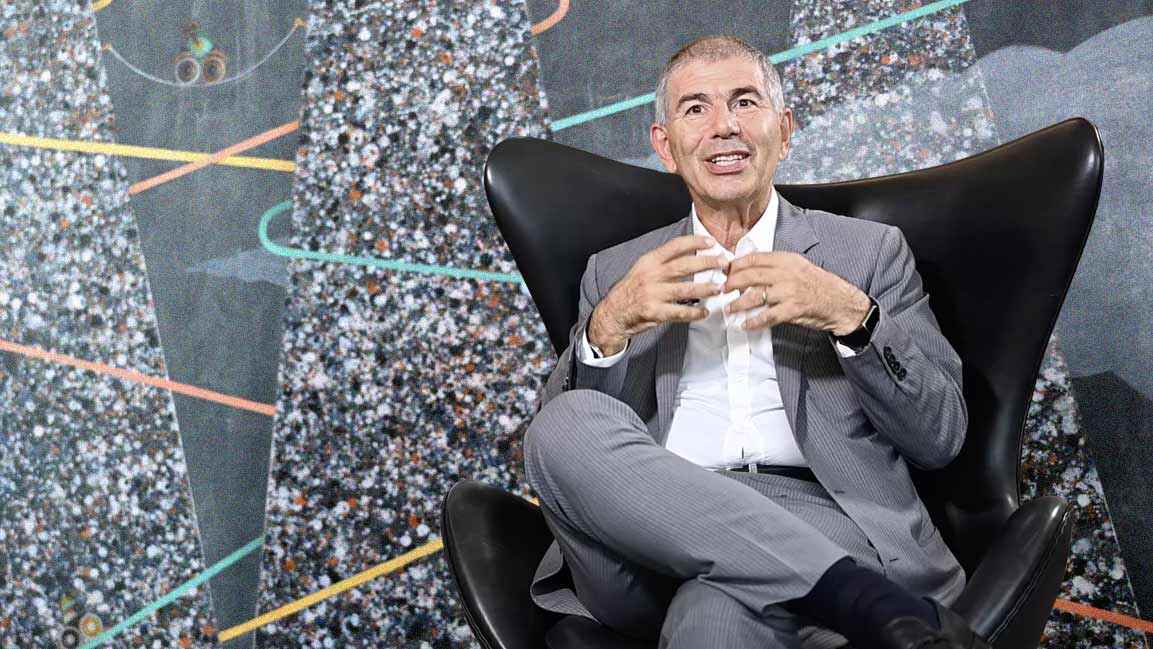
The luxury landscape has changed dramatically over the past six decades since the Chalhoub Group was established in the Middle East. In the past 67 years, the group — synonymous with the world of luxury, beauty, and fashion — cemented its position as a leading retailer.
A lot has been written about the group’s accomplishments, including its innovative concept stores, incubator programs, and impressive franchises featuring global brands. To fully understand the group’s success in the region, its rich heritage in the world of art and culture cannot be ignored, which it has consistently amplified over the years through its strategy and growth trajectory.
To stay abreast of changing customer needs and run the day-to-day business operations, Patrick Chalhoub, President of Chalhoub Group, says it’s important to draw inspiration from the past, not necessarily from art, when we sit down for a chat in his office at the heart of Dubai Design District (d3).
WATCH THE VIDEO HERE
Before we delve into the world of art, we speak about the changing landscape of luxury. “The world is indeed changing fast,” says Chalhoub. “The biggest change has been in consumer motivations and aspirations.”
“The consumer today is looking for things with a purpose, which has a meaning” more than ever before. Inflation and the pandemic-led crunch have a lasting impact on the world of luxury worldwide. “More recently, it’s all about the person himself,” he says, discussing the altered consumer perspective.
A BALANCE OF HISTORY AND MODERNITY
“Today, our consumer is very young. We are speaking to new generations,” he says. The psyche and motivations of this digital generation are entirely different from the previous. He emphasizes aesthetics, beauty, quality, and tradition are equally important when catering to the new generation that makes up a large chunk of the luxury sector’s consumers.
Overall the fuse between modernity and tradition is an overarching area that defines the success or failure of luxury enterprises. Certain things remain constant. At the same time, many new developments in the fashion world are “fascinating,” says Chalhoub.
To satisfy and attract young customers, relevance needs to be prioritized. “Young customers want innovation, creativity, and differentiation,” he says. It’s important to understand what truly delights and inspires the young audience. Businesses need to be “extremely relevant” to a generation that seeks to “stand out from the crowd,” and this can be achieved, he says, by balancing tradition and history with modernity.
More than ever, innovation and creativity and their collision with the world of art and poetry have emerged as determinants of success for luxury brands seeking to cater to today’s customers.
FUELING INNOVATION
Technology is another enabler to delight customers and helps brands to anticipate demands while ensuring relevance.
The group’s reach has expanded with initiatives under the Chalhoub Greenhouse, launched five years ago as its retail technology accelerator, and Ibtikar, its in-house incubator for employees. “The primary objective is to fuel innovation within our group and in the mindset of our people.
“It has gained a lot of momentum,” he says across the different countries where the group has implemented them.
Chalhoub says this is just the beginning, “We want to be part of those who will shape the market, essentially the shapers of the fashion and the beauty industry in the Middle East.”
Despite changes, trends, and volatility of the fashion industry, what guided the group is the drive for inspiration, which he says can come from “anything that matters.”
“Arts inspire me. I draw a lot of inspiration from people and nature”, Chalhoub says, emphasizing that inspiration doesn’t necessarily emerge from influencers or leaders. However, “art is the best source of inspiration” for him.
There has been an evolution in his taste for art through the years. “My tastes have changed through time. I love impressionists; I love Renoir, Monet, and Van Gogh. But more recently, I’ve been attracted to modern, contemporary art. Contemporary art is more an expression of the artist. I love Anish Kapoor, where you see a reflection of yourself.”
He then tells us his office is the perfect reflection of how his tastes have evolved. “Some of the paintings reflect the feeling of nostalgia.”
THE PAST WITH EYES ON THE FUTURE
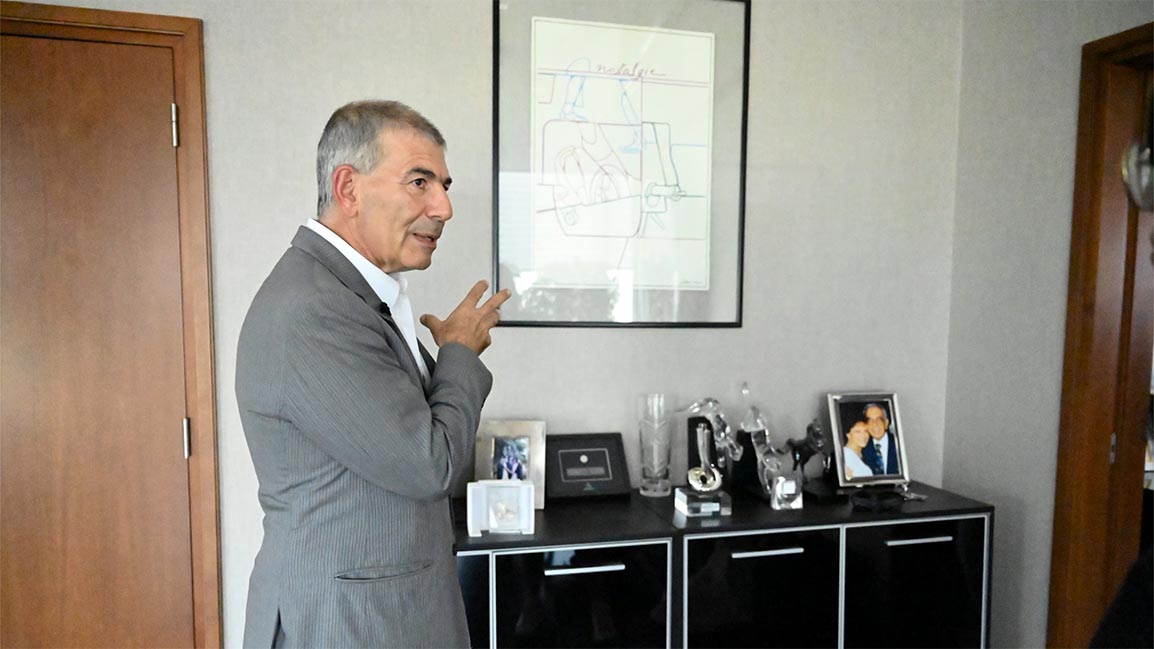
Hanging on the wall opposite his central desk is a painting ‘Nostalgia’ by Italian painter Valerio Adami – representing the power of craftsmanship and looking at the future – that Chalhoub says makes him nostalgic. “I love retrofuturism. If you look at the past to build the future, I think there is a lot to learn.” The painting is a reminder, he says, to always look at the future without forgetting one’s roots.
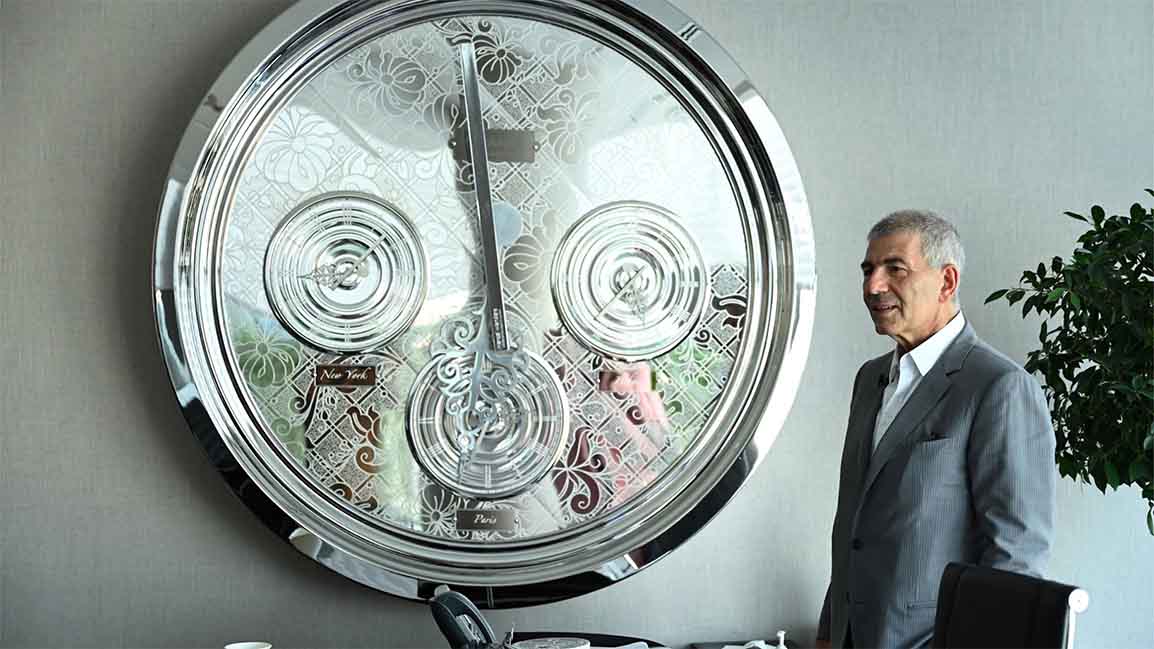
The luxurious clock (above) for Christofle with patterns, including interlaced leaves, curled flowers and decorative apples against a geometric matrix, is representative of globalization, was made by architect and curator Marcel Wanders. Explaining why it relates to him, Chalhoub says, “I’m a fervent supporter of globalization as long as every community and city retains its own identity.”
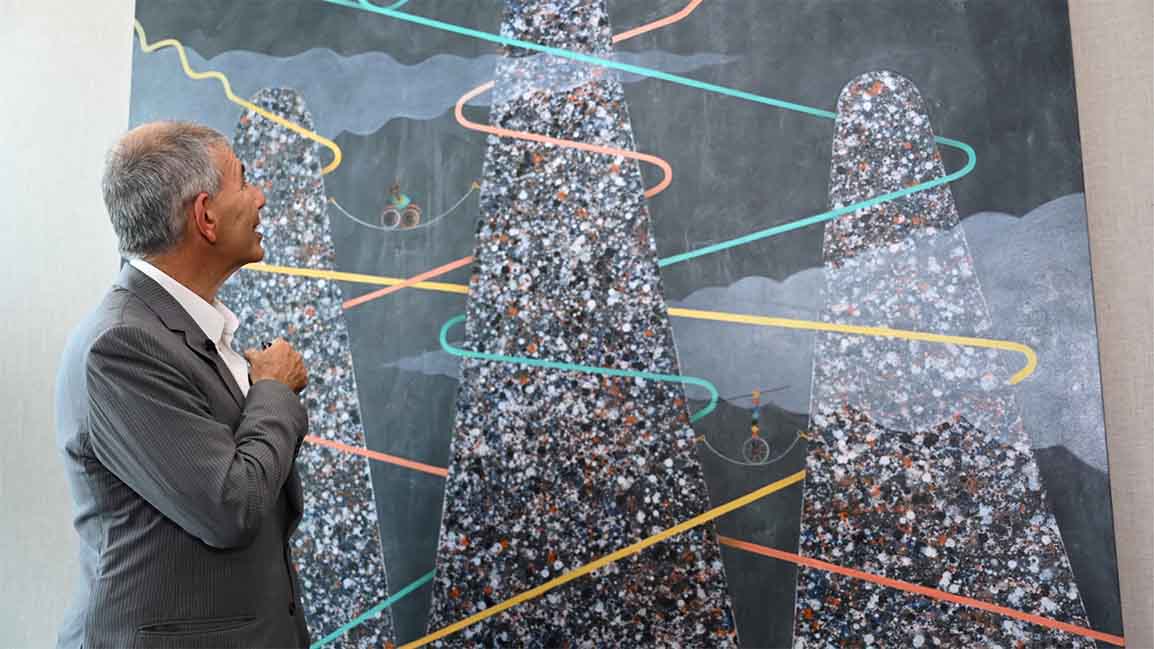
As we move to the inner meeting room, there’s a painting that showcases elements reflective of the ups and downs of life while staying focused and striking a balance. This piece shows, he says, how “things in life could go faster and move up to the sky and how things could go down the drain.” It’s a reminder to “find the right balance and remain stable.”
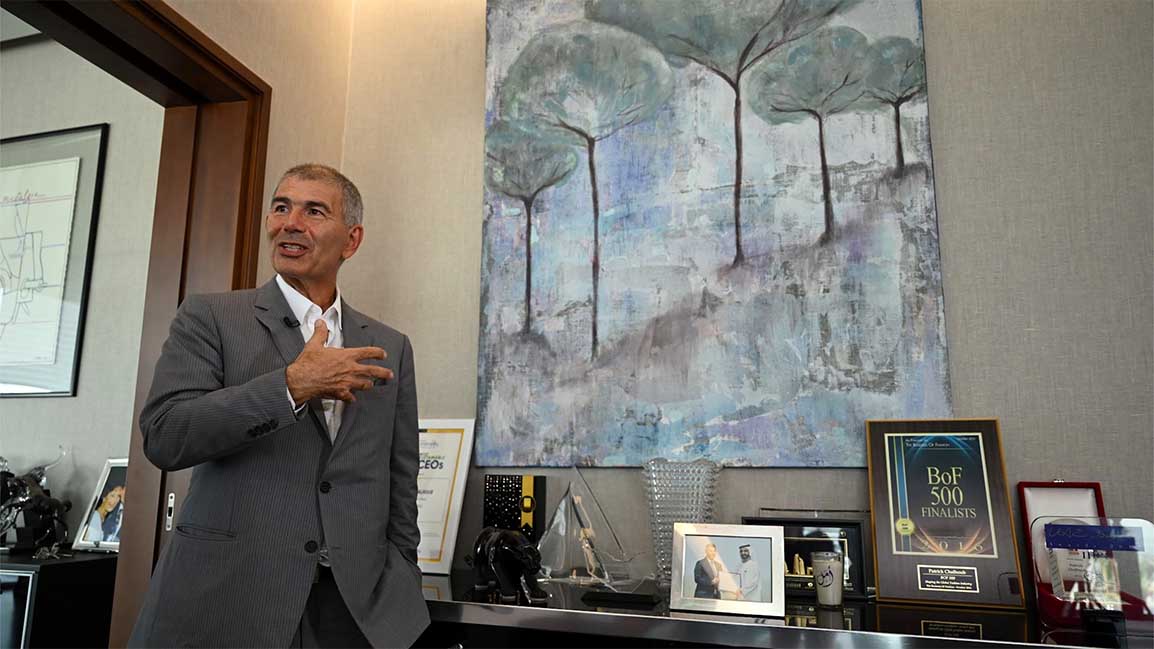
Finally, Chalhoub shows us a painting he cherishes deeply and considers “special.” It was a gift from his close school friend, Dima Raouda, who knows his passion for impressionistic paintings and created it for him.











